NASA captures 360 degree views of dancing lights of Saturn (w/video)
 'Glamorous' images of the dancing lights around Saturn have been captured in greater detail than ever before, thanks to two NASA spacecraft.
'Glamorous' images of the dancing lights around Saturn have been captured in greater detail than ever before, thanks to two NASA spacecraft.
Feb 11th, 2014
Read more
 Subscribe to our Space Exploration News feed
Subscribe to our Space Exploration News feed
 'Glamorous' images of the dancing lights around Saturn have been captured in greater detail than ever before, thanks to two NASA spacecraft.
'Glamorous' images of the dancing lights around Saturn have been captured in greater detail than ever before, thanks to two NASA spacecraft.
Feb 11th, 2014
Read more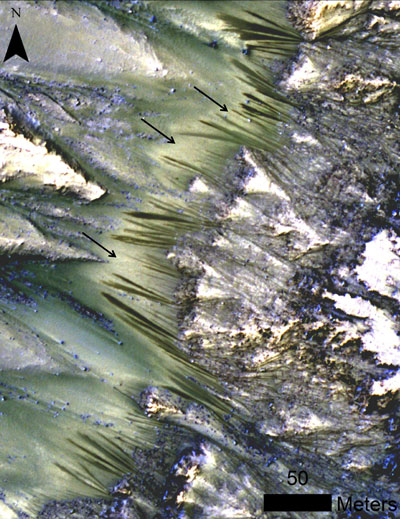 Martian experts have known since 2011 that mysterious, possibly water-related streaks appear and disappear on the planet's surface.
Martian experts have known since 2011 that mysterious, possibly water-related streaks appear and disappear on the planet's surface.
Feb 10th, 2014
Read moreScientists have solved a major problem with the current standard model of cosmology identified by combining results from the Planck spacecraft and measurements of gravitational lensing in order to deduce the mass of ghostly sub-atomic particles called neutrinos.
Feb 10th, 2014
Read more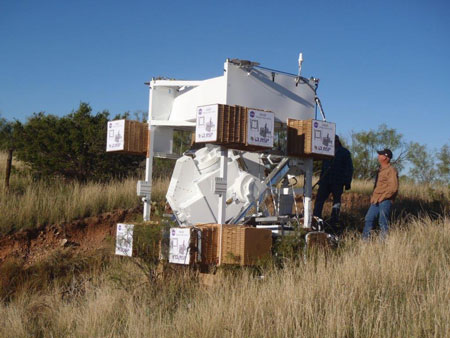 Scientists who study Earth, the sun and stars have long used high-altitude scientific balloons to carry their telescopes far into the stratosphere for a better view of their targets. Not so much for planetary scientists. That's because they needed a highly stable, off-the-shelf-type system that could accurately point their instruments and then track planetary targets as they moved in the solar system. That device now exists.
Scientists who study Earth, the sun and stars have long used high-altitude scientific balloons to carry their telescopes far into the stratosphere for a better view of their targets. Not so much for planetary scientists. That's because they needed a highly stable, off-the-shelf-type system that could accurately point their instruments and then track planetary targets as they moved in the solar system. That device now exists.
Feb 8th, 2014
Read more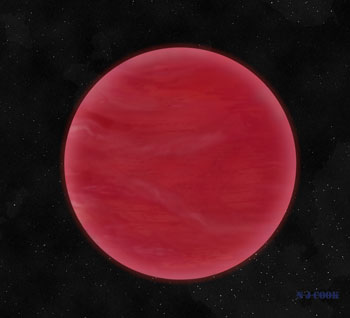 A peculiar example of a celestial body, known as a brown dwarf, with unusually red skies has been discovered by a team of astronomers from the University of Hertfordshire's Centre for Astrophysics Research.
A peculiar example of a celestial body, known as a brown dwarf, with unusually red skies has been discovered by a team of astronomers from the University of Hertfordshire's Centre for Astrophysics Research.
Feb 6th, 2014
Read more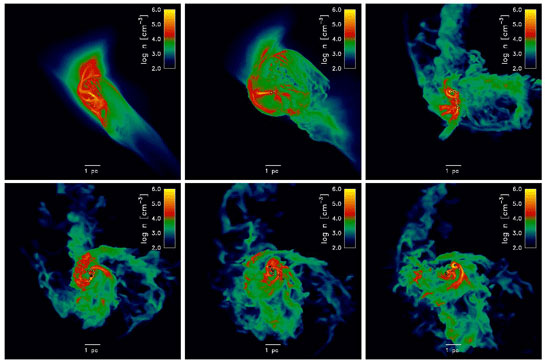 Using the Stampede, Lonestar and Ranger supercomputers, University of Texas researchers simulated the formation of the Universe from the Big Bang through the first few hundred million years of its existence. The researchers found that more realistic models of supernova blasts help explain the range of metalicity found in different galaxies. The results of the simulations will assist in guiding the James Webb Space Telescope, set to launch in 2018.
Using the Stampede, Lonestar and Ranger supercomputers, University of Texas researchers simulated the formation of the Universe from the Big Bang through the first few hundred million years of its existence. The researchers found that more realistic models of supernova blasts help explain the range of metalicity found in different galaxies. The results of the simulations will assist in guiding the James Webb Space Telescope, set to launch in 2018.
Feb 5th, 2014
Read moreA new study reveals that black holes, formed from the first stars in our universe, heated the gas throughout space later than previously thought. They also imprinted a clear signature in radio waves which astronomers can now search for. The study is a major new finding about the origins of the universe.
Feb 5th, 2014
Read more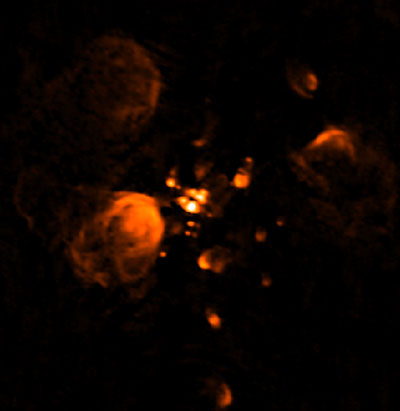 Some 30 years ago, astronomers found that regions of ionized gas around young high mass stars remain small (under a third of a light-year) for ten times longer than they should if they were to expand as expected in simple models. Recent supercomputer simulations predicted that these regions actually flicker in brightness over this period rather than grow continuously.
Some 30 years ago, astronomers found that regions of ionized gas around young high mass stars remain small (under a third of a light-year) for ten times longer than they should if they were to expand as expected in simple models. Recent supercomputer simulations predicted that these regions actually flicker in brightness over this period rather than grow continuously.
Feb 5th, 2014
Read more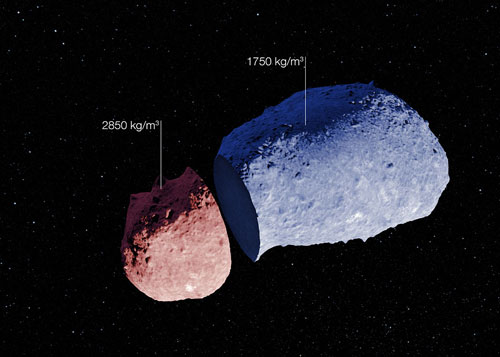 ESO's New Technology Telescope has been used to find the first evidence that asteroids can have a highly varied internal structure. By making measurements astronomers have found that different parts of the asteroid Itokawa have different densities. As well as revealing secrets about the asteroid's formation, finding out what lies below the surface may also shed light on what happens when bodies collide in the Solar System, and provide clues about how planets form.
ESO's New Technology Telescope has been used to find the first evidence that asteroids can have a highly varied internal structure. By making measurements astronomers have found that different parts of the asteroid Itokawa have different densities. As well as revealing secrets about the asteroid's formation, finding out what lies below the surface may also shed light on what happens when bodies collide in the Solar System, and provide clues about how planets form.
Feb 5th, 2014
Read more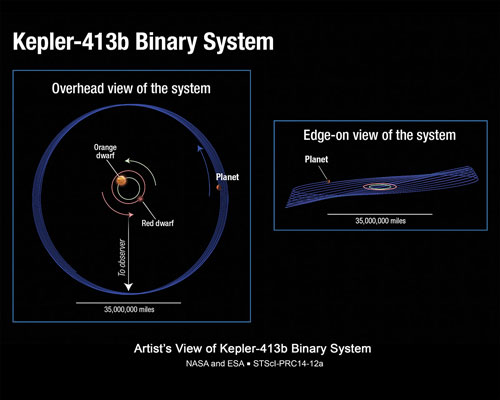 Imagine living on a planet with seasons so erratic you would hardly know whether to wear Bermuda shorts or a heavy overcoat. That is the situation on a weird, wobbly world found by NASA's planet-hunting Kepler space telescope.
Imagine living on a planet with seasons so erratic you would hardly know whether to wear Bermuda shorts or a heavy overcoat. That is the situation on a weird, wobbly world found by NASA's planet-hunting Kepler space telescope.
Feb 4th, 2014
Read more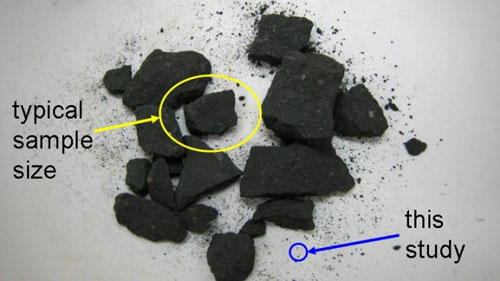 While the origin of life remains mysterious, scientists are finding more and more evidence that material created in space and delivered to Earth by comet and meteor impacts could have given a boost to the start of life. Some meteorites supply molecules that can be used as building blocks to make certain kinds of larger molecules that are critical for life.
While the origin of life remains mysterious, scientists are finding more and more evidence that material created in space and delivered to Earth by comet and meteor impacts could have given a boost to the start of life. Some meteorites supply molecules that can be used as building blocks to make certain kinds of larger molecules that are critical for life.
Feb 4th, 2014
Read more Fruit flies bred in space are offering scientists a clue as to how astronauts' immune systems may be damaged during prolonged space travel.
Fruit flies bred in space are offering scientists a clue as to how astronauts' immune systems may be damaged during prolonged space travel.
Jan 31st, 2014
Read more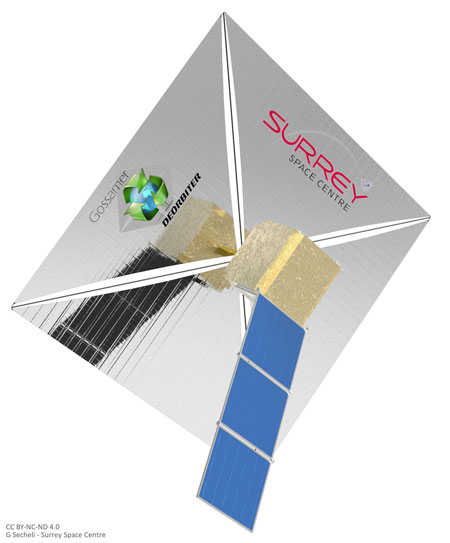 The gossamer deorbiting system is designed to automatically orient the sail in the direction where maximum drag can be achieved, ensuring quicker deorbiting. Furthermore, the sail is made reflective, which allows it to make use of the solar radiation pressure to manoeuvre; solar sailing, so to speak.
The gossamer deorbiting system is designed to automatically orient the sail in the direction where maximum drag can be achieved, ensuring quicker deorbiting. Furthermore, the sail is made reflective, which allows it to make use of the solar radiation pressure to manoeuvre; solar sailing, so to speak.
Jan 31st, 2014
Read more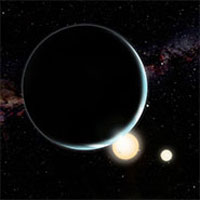 Luke Skywalker's home planet Tatooine would have formed far from its current location in the Star Wars universe, a new University of Bristol study into its real world counterparts, observed by the Kepler space telescope, suggests.
Luke Skywalker's home planet Tatooine would have formed far from its current location in the Star Wars universe, a new University of Bristol study into its real world counterparts, observed by the Kepler space telescope, suggests.
Jan 31st, 2014
Read more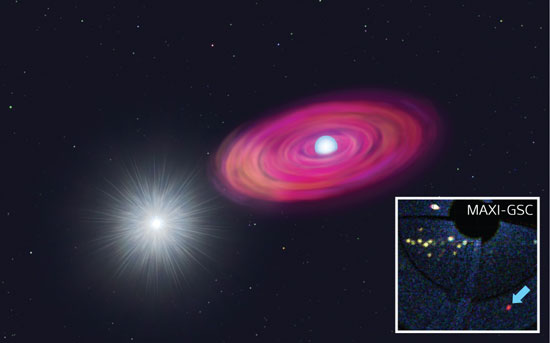 The MAXI instrument aboard the International Space Station gets a ringside seat as a white dwarf undergoes a spectacular and short-lived nova explosion.
The MAXI instrument aboard the International Space Station gets a ringside seat as a white dwarf undergoes a spectacular and short-lived nova explosion.
Jan 31st, 2014
Read more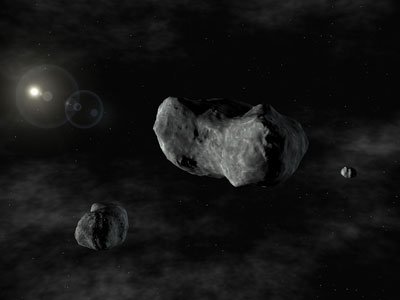 A new map of the solar system's asteroids shows more diversity than previously thought.
A new map of the solar system's asteroids shows more diversity than previously thought.
Jan 30th, 2014
Read moreOur solar system seems like a neat and orderly place, with small, rocky worlds near the sun and big, gaseous worlds farther out, all eight planets following orbital paths unchanged since they formed. However, the true history of the solar system is more riotous. Giant planets migrated in and out, tossing interplanetary flotsam and jetsam far and wide. New clues to this tumultuous past come from the asteroid belt.
Jan 29th, 2014
Read moreNASA's Physical Science Research Program will fund seven proposals to conduct physics research using the agency's new microgravity laboratory, which is scheduled to launch to the International Space Station in 2016.
Jan 29th, 2014
Read more